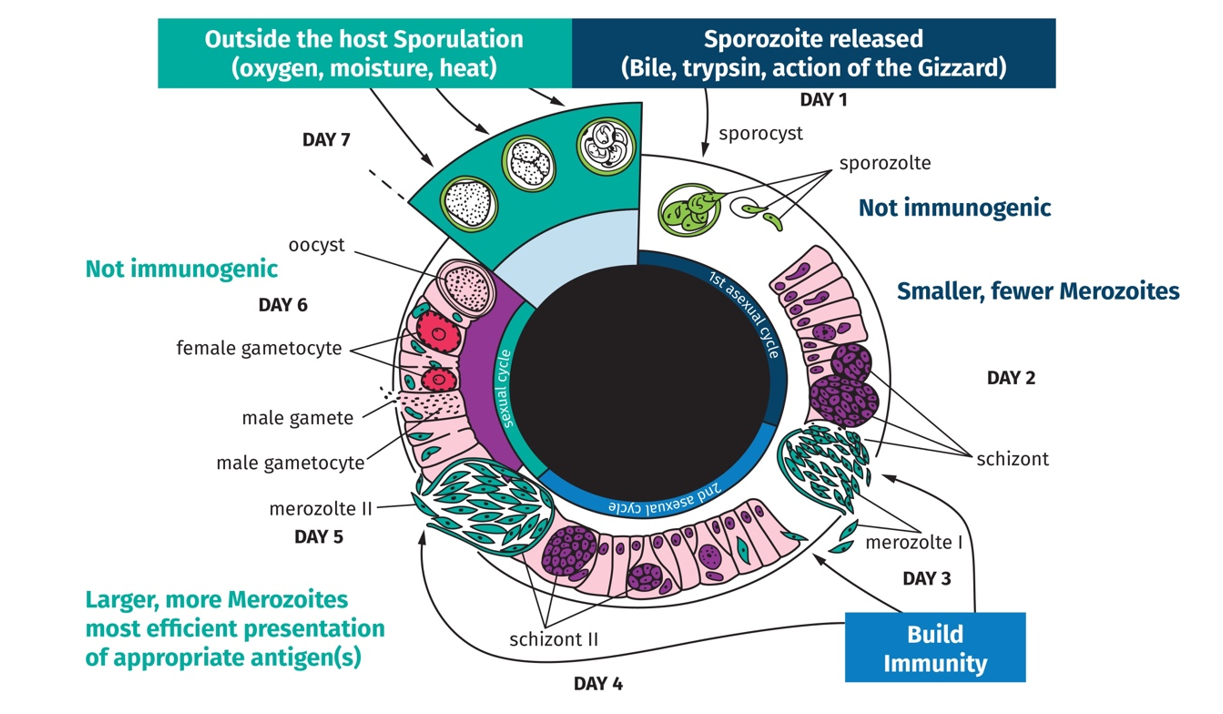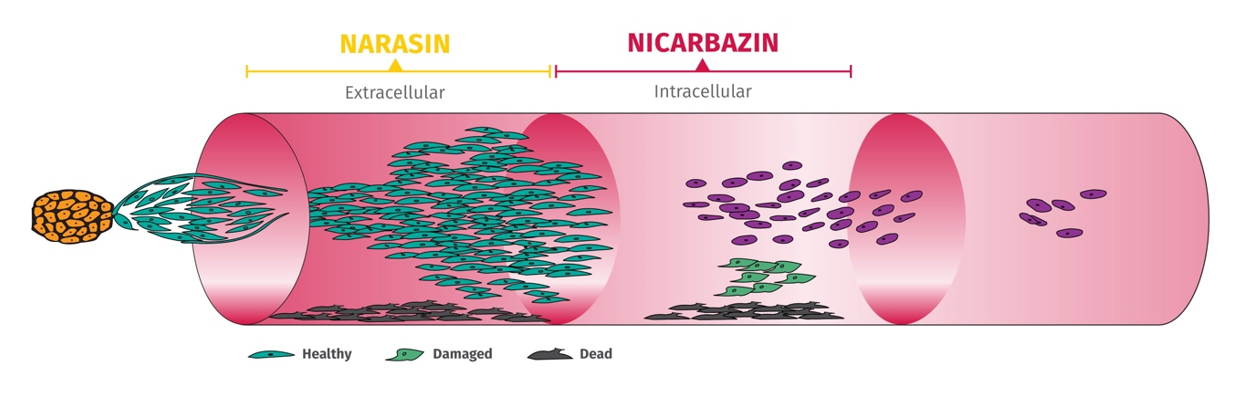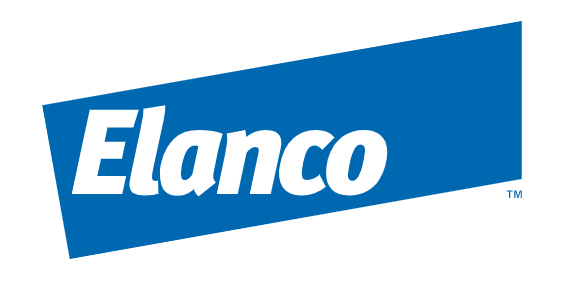



Ionophores help control coccidiosis without losing efficacy
Control coccidiosis without losing efficacy with planned rotations.Selecting an anticoccidial program is one of the most important things a broiler producer must do each year. Not only that; they also have to carefully plan their strategy and their rotations.
To help reduce the impact coccidiosis has on poultry flocks and reduce the number of both clinical and subclinical cases, producers have turned to one of two types of anticoccidials.
The first type are synthetic compounds, which are commonly known in the poultry industry as “chemicals.” However, excessive use of chemicals has contributed to resistance over the years, and chemicals must be rotated regularly to maintain efficacy.
The other anticoccidial option is ionophores. Since the 1970s, ionophores have become one of the main solutions to help with coccidiosis control. They help control the disease, but still allow birds to develop an immune response to it.1
Ionophores are not considered medically important to human medicine by the World Health Organization (WHO), making them a sustainable solution to help control coccidiosis. They have been used for 50 years and have stood the test of time keeping birds healthy.
Excessive rotations of ionophores may not only be unnecessary, but potentially not optimal for performance Many producers have used the same ionophore consistently for five to seven years without any negative impacts or loss of efficacy.
Extending the use of an ionophore and reducing anticoccidial program rotations can help with overall planning, management, gut integrity and bird performance.
Ionophores: A Unique Mode of Action
Instead of trying to eliminate coccidiosis entirely, ionophores allow a small number of cocci to replicate in the intestine and enable birds to develop their own immune response.2
The process starts when ionophores insert themselves into the cell membrane of coccidia and transport the sodium ion across the membrane. Water enters the cell following the sodium. In response, the cell turns on its sodium/potassium pump to try to remove the sodium. This process will eventually deplete the cell’s energy and it will no longer be able to expel the sodium from the membrane, eventually resulting in the death of the cell following rupture from the excess water.

Because of their unique mode of action, antimicrobial resistance rarely occurs in ionophores.3
Optimize Cocci Control With Ionophores and Chemicals Together
Ionophores can also improve the effects of chemical anticoccidials. When using a product that has a dual mode of action, broiler producers can attack coccidiosis at two different stages of the cell’s life cycle.
Ionophores attack coccidiosis during the lumenal stage. At this time, many coccidiosis cells will be killed and many others will be weakened.
Chemicals deal with coccidiosis during the intracellular stage. Due to the impact the ionophores have already had, the chemical will have less work to do, easily killing off the weakened cells and any coccidia that were not impacted by the ionophore.

By using ionophores and chemicals together, producers have the ability to feed less of each type, which can help prevent a loss of efficacy, especially for the chemical.
Excessive Anticoccidial Rotations Have Negative Impacts
The key to successful coccidiosis control is a well-planned rotation strategy. Poultry producers must pick the right product mix, which may include chemicals, ionophores and vaccines, for each stage of grow-out and carefully plan their rotations for the best results.
There are two main reasons that producers choose to rotate or shuttle their anticoccidial program, including:
- To make sure they are using the best product for each stage of production.
- To avoid loss of efficacy.
But excessive rotations can have a negative impact on cocci control and broiler performance.
When a producer switches from one anticoccidial to another, the bird goes through a transition period where the effects of the first product wane and the effects of the new product ramp up. During this period, growers will actually have less control over coccidiosis in their facilities because neither product is working to its full potential.
Watch: Control Coccidiosis in Chickens With Planned Rotations
Maxiban® for Optimal Cocci Control
Using anticoccidials at excessive levels has a negative impact on broiler performance.4 However, not using anticoccidials is detrimental to the birds’ well-being and results in poor performance.4,5
Maxiban® has low levels of a narasin (ionophore) and nicarbazin (chemical) to create a complex, dual mode of action that minimizes the genetic pressure on coccidia populations, resulting in long-term efficacy with minimal risk of resistance development.
With the reduced risk of lost efficacy, producers can extend the use of Maxiban for longer periods of time, which will help eliminate transition periods between products. Studies have shown that using a product with narasin in the grower and finisher feeds resulted in better feed conversion when compared to the use of salinomycin in grower and finisher.6
Broiler producers may contact their Elanco Technical Consultant to determine if Maxiban is the best option for their flock and to develop an optimal coccidiosis control program.
Maxiban, Elanco and the diagonal bar logo are trademarks of Elanco or its affiliates. © 2022 Elanco or its affiliates.
PM-US-23-0118
| References | ||||
|---|---|---|---|---|
| [1]Chapman HD. | ||||
| (2009) | A landmark contribution to poultry science—prophylactic control of coccidiosis in Poultry.. Poult Sci. | 2009;88(4):813-5. | ||
| [2] Peek HW, Landman WJ. | ||||
| (2011) | Coccidiosis in poultry: anticoccidial products, vaccines and other prevention strategies.. Vet Q. | 2011;31:143-161. | ||
| [3]Jeffers T. | ||||
| (2009.) | Prospects for the extended use of Maxiban as an anticoccidial for broiler chickens. | |||
| [4]McDougald L. | ||||
| (2003) | Protozoal infections.. Dis Poult. | 11th ed. 2003;983-5. | ||
| [5]McDougald L. | ||||
| (1982) | Chemotherapy of coccidiosis.. The Biology of the Coccidia. | 1982;373-427. | ||
| [6]Elanco Animal Health. Data on file. | ||||










